Cowbell Slang: What It Really Means in English

Written by
Ernest Bio Bogore

Reviewed by
Ibrahim Litinine
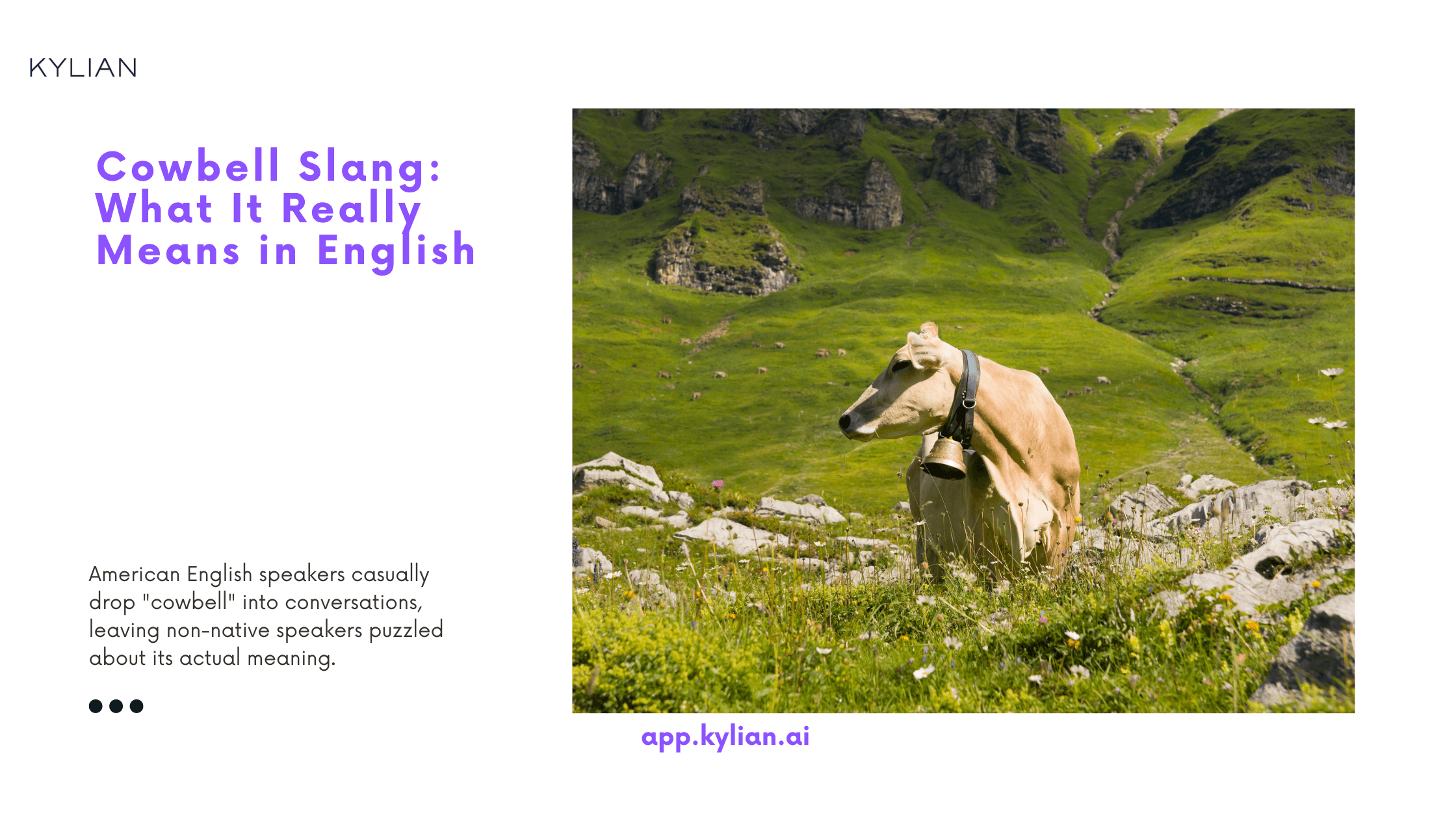
American English speakers casually drop "cowbell" into conversations, leaving non-native speakers puzzled about its actual meaning. This isn't about farm equipment or musical instruments—it's about intensity, emphasis, and the relentless pursuit of more.
The cowbell slang expression emerged from Saturday Night Live's iconic 2000 sketch featuring Christopher Walken demanding "more cowbell" during a Blue Öyster Cult recording session. What started as comedy became linguistic currency, representing the need for additional emphasis, energy, or quantity in any situation.
Understanding this expression matters because it reflects how American pop culture shapes everyday language. When someone says a project "needs more cowbell," they're invoking a shared cultural reference that communicates urgency and intensity more effectively than conventional phrases.
In what context is 'cowbell' used?
The cowbell expression operates across three distinct contextual frameworks, each carrying specific connotations that reveal the speaker's intent and cultural awareness.
Professional Enhancement Context: In workplace environments, "more cowbell" signals the need for additional effort, resources, or intensity. This usage typically emerges during project reviews, creative brainstorming sessions, or performance evaluations. The expression carries an undertone of constructive criticism wrapped in humor, making it socially acceptable to demand improvements without appearing overly harsh.
For example: "This marketing campaign is solid, but it needs more cowbell to really grab attention." (Translation: The campaign requires additional impact or memorable elements.)
Creative Amplification Context: Artists, musicians, and content creators use cowbell references to describe the need for increased drama, flair, or memorable elements in their work. This context preserves the expression's musical origins while expanding its application to all creative endeavors.
For example: "The opening scene works, but the director said it needs more cowbell." (Translation: The scene requires additional dramatic intensity or memorable moments.)
Everyday Enthusiasm Context: In casual conversations, people invoke cowbell to express that something requires more excitement, energy, or general "oomph." This usage democratizes the expression, making it accessible for describing everything from parties to personal goals.
For example: "My workout routine is getting stale—it definitely needs more cowbell." (Translation: The routine requires additional intensity or variety to maintain engagement.)
How to use 'cowbell' like a native speaker with examples?
The grammatical structure of cowbell expressions follows specific patterns that native speakers intuitively understand. Mastering these structures prevents awkward usage and ensures your communication sounds natural.
Subject + Needs + More Cowbell Structure: This represents the most common grammatical pattern, where the subject requiring enhancement precedes the cowbell reference. The verb "needs" creates urgency while maintaining conversational tone.
For example: "This presentation needs more cowbell to keep the audience engaged." (Translation: The presentation requires additional engaging elements.)
Quantitative Cowbell Structure: Native speakers often modify the expression with quantifiers like "way more," "definitely more," or "serious" to indicate intensity levels. This structure allows for nuanced communication about the degree of enhancement required.
For example: "That product launch needs way more cowbell if we want to compete with Apple." (Translation: The launch requires significantly more memorable or impactful elements.)
Conditional Cowbell Structure: Advanced usage incorporates conditional statements that link cowbell enhancement to specific outcomes. This structure demonstrates sophisticated understanding of cause-and-effect relationships.
For example: "If this restaurant wants to survive the competition, their service needs more cowbell." (Translation: The restaurant must significantly improve their service intensity to remain competitive.)
Comparative Cowbell Structure: Native speakers use cowbell in comparative constructions to benchmark against other examples or previous performances. This structure requires understanding of comparative grammar while maintaining the expression's playful tone.
For example: "Last year's conference had energy, but this year's event needs more cowbell than ever." (Translation: This year's event requires greater intensity than the previous successful conference.)
4 other words you can use instead of 'cowbell' to sound more natural
While cowbell remains culturally specific, several alternative expressions convey similar meanings across different social contexts. Understanding these alternatives prevents overuse while maintaining communicative effectiveness.
"Oomph": This onomatopoetic expression communicates the need for additional impact or energy without cultural specificity. It works particularly well in professional settings where pop culture references might seem inappropriate.
For example: "The quarterly report has good data, but it lacks the oomph to impress the board." (Translation: The report needs additional impact or compelling presentation elements.)
"Punch": This metaphorical expression draws from boxing terminology to describe the need for greater impact or memorability. It works effectively in creative and business contexts where competitive advantage matters.
For example: "The advertisement is informative, but it needs more punch to stand out from competitors." (Translation: The advertisement requires additional impact to differentiate from competing messages.)
"Pizzazz": This expression emphasizes style, flair, and memorable presentation rather than raw intensity. It works particularly well when describing entertainment, marketing, or creative projects requiring sophisticated appeal.
For example: "The store display is organized, but it needs more pizzazz to attract customers." (Translation: The display requires additional visual appeal or memorable elements.)
"Edge": This expression suggests the need for distinctive characteristics that create competitive advantage or memorable differentiation. It works across professional and creative contexts where uniqueness matters.
For example: "The startup's business model is solid, but it needs more edge to attract investors." (Translation: The business model requires additional distinctive or compelling elements.)
How to use 'cowbell' in formal and informal scenarios
Understanding contextual appropriateness prevents social missteps while maximizing the expression's communicative impact. The key lies in reading audience expectations and adjusting accordingly.
Formal Business Context: During quarterly performance reviews, team leaders often use cowbell references to provide constructive feedback without appearing overly critical. This approach maintains professional relationships while clearly communicating improvement expectations.
For example: "The client presentation covered all technical specifications, but it needs more cowbell to really sell our capabilities." (Translation: The presentation requires additional persuasive elements or compelling delivery to effectively influence client decisions.)
Formal Academic Context: In creative writing workshops or media studies courses, professors employ cowbell references to discuss engagement strategies and audience impact. This usage demonstrates cultural literacy while maintaining academic rigor.
For example: "Your thesis argument is well-researched, but the introduction needs more cowbell to hook readers immediately." (Translation: The introduction requires additional compelling elements to capture reader attention from the opening sentences.)
Informal Social Context: Friends use cowbell expressions to encourage each other's personal projects or social activities. This usage emphasizes supportive relationships while maintaining playful communication.
For example: "Your dating profile is honest, but it needs more cowbell to stand out on the app." (Translation: The profile requires additional interesting or memorable elements to attract potential matches.)
Informal Creative Context: In casual creative collaborations, artists and writers use cowbell references to provide feedback without damaging creative confidence. This approach maintains supportive relationships while encouraging improvement.
For example: "The song's melody is catchy, but the bridge needs more cowbell to really build excitement." (Translation: The bridge section requires additional intensity or memorable elements to enhance the overall musical experience.)
Common mistakes to avoid when using 'cowbell'
Non-native speakers often misapply cowbell expressions in ways that sound forced or culturally inappropriate. Understanding these pitfalls prevents embarrassing miscommunications.
Overuse Mistake: Repeatedly using cowbell expressions in single conversations creates the impression of limited vocabulary or cultural understanding. Native speakers use the expression sparingly for maximum impact.
Incorrect example: "This meeting needs more cowbell, and the agenda needs more cowbell, and the follow-up needs more cowbell." (Translation: This sounds repetitive and demonstrates poor linguistic variety.)
Correct usage: "This meeting needs more cowbell—the agenda feels too rigid for creative brainstorming." (Translation: This meeting requires additional energy or flexible structure to encourage creative participation.)
Inappropriate Context Mistake: Using cowbell expressions in solemn or sensitive situations demonstrates poor cultural awareness and can offend audiences expecting serious communication.
Incorrect example: "The memorial service was nice, but it needed more cowbell." (Translation: This statement would be considered highly inappropriate and insensitive.)
Correct understanding: Reserve cowbell expressions for situations involving improvement, enhancement, or creative development rather than solemn occasions.
The Cultural Impact of Cowbell Beyond Comedy
The cowbell phenomenon represents more than linguistic novelty—it demonstrates how shared cultural experiences create communication shortcuts that strengthen social bonds. When someone references "more cowbell," they're invoking collective memory that transcends the original sketch's humor.
This linguistic evolution reflects broader patterns in American English where entertainment media shapes everyday communication. The expression's persistence over two decades proves its utility in filling a specific communicative gap: the need for encouraging improvement while maintaining social harmony.
Understanding cowbell usage provides insight into American cultural values emphasizing continuous improvement, creative enhancement, and the importance of memorable experiences. These values influence everything from business practices to personal relationships, making cultural literacy essential for effective communication.
Advanced Cowbell Usage in Digital Communication
Modern digital communication has expanded cowbell applications beyond face-to-face conversations. Social media platforms, email communications, and video conferences have created new contexts requiring nuanced understanding.
Social Media Context: Cowbell references in social media posts signal cultural awareness while encouraging engagement. The expression's inherent humor makes it particularly effective for increasing likes, shares, and comments.
Email Communication: Professional emails benefit from cowbell expressions when providing constructive feedback or encouraging team improvements. The expression softens potentially harsh critiques while maintaining clear communication about expectations.
Video Conference Context: Remote work environments have embraced cowbell expressions for maintaining team morale while discussing project improvements. The expression's familiarity helps bridge physical distance through shared cultural understanding.
Learn Any Language with Kylian AI
Private language lessons are expensive. Paying between 15 and 50 euros per lesson isn’t realistic for most people—especially when dozens of sessions are needed to see real progress.
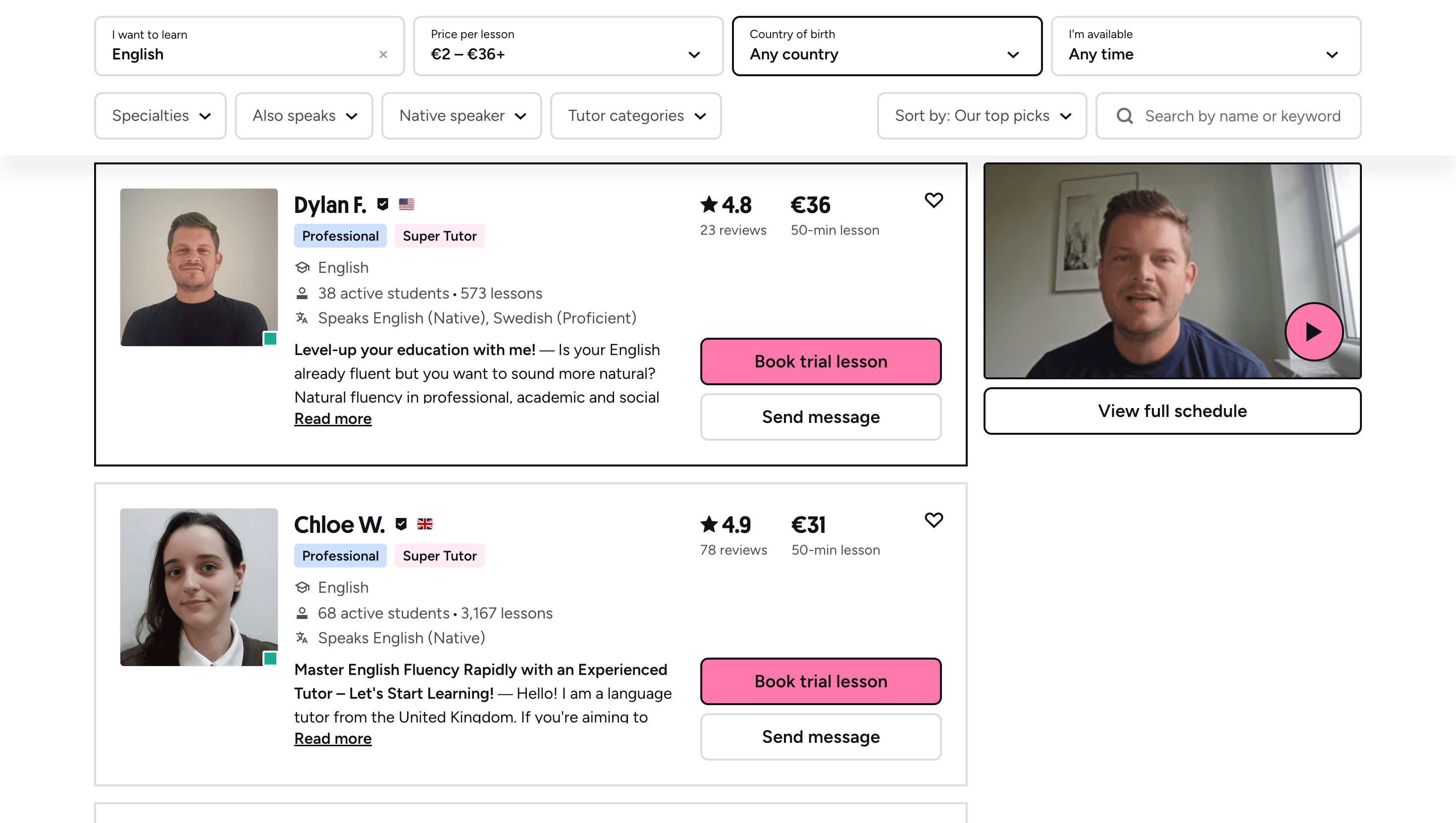
Many learners give up on language learning due to these high costs, missing out on valuable professional and personal opportunities.
That’s why we created Kylian: to make language learning accessible to everyone and help people master a foreign language without breaking the bank.
To get started, just tell Kylian which language you want to learn and what your native language is
Tired of teachers who don’t understand your specific struggles as a French speaker? Kylian’s advantage lies in its ability to teach any language using your native tongue as the foundation.
Unlike generic apps that offer the same content to everyone, Kylian explains concepts in your native language (French) and switches to the target language when necessary—perfectly adapting to your level and needs.
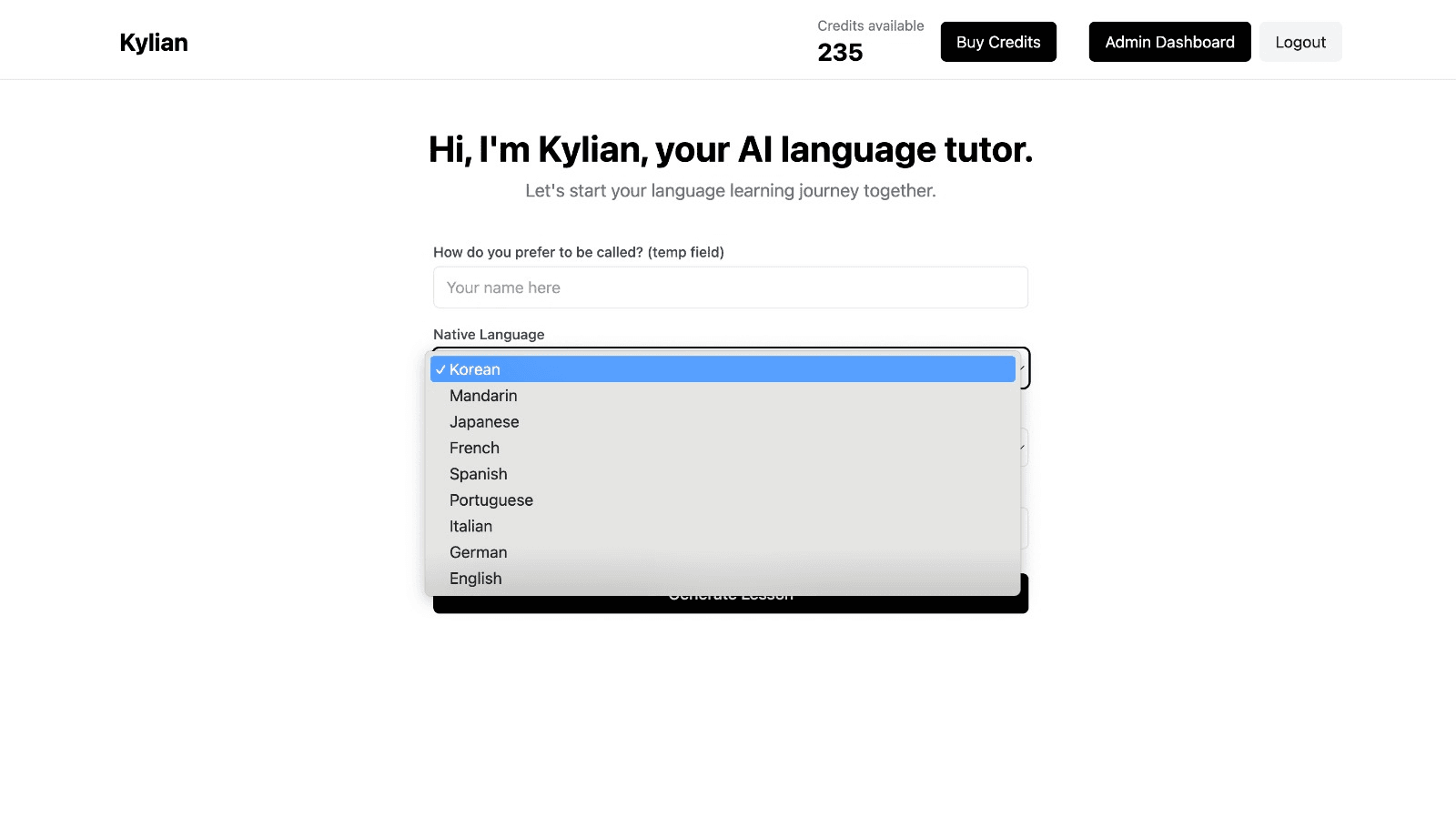
This personalization removes the frustration and confusion that are so common in traditional language learning.
Choose a specific topic you want to learn
Frustrated by language lessons that never cover exactly what you need? Kylian can teach you any aspect of a language—from pronunciation to advanced grammar—by focusing on your specific goals.
Avoid vague requests like “How can I improve my accent?” and be precise: “How do I pronounce the R like a native English speaker?” or “How do I conjugate the verb ‘to be’ in the present tense?”
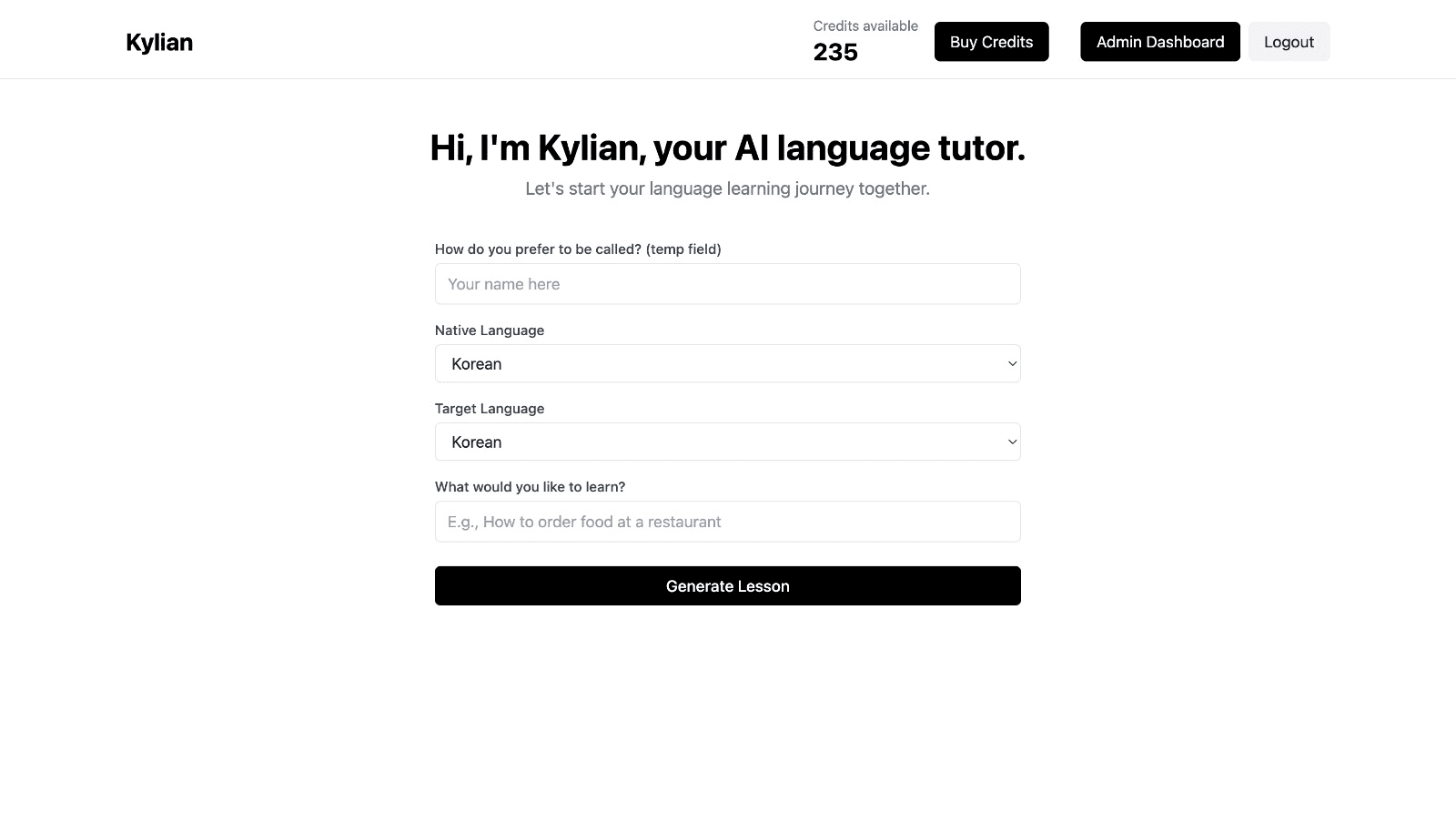
With Kylian, you’ll never again pay for irrelevant content or feel embarrassed asking “too basic” questions to a teacher. Your learning plan is entirely personalized.
Once you’ve chosen your topic, just hit the “Generate a Lesson” button, and within seconds, you’ll get a lesson designed exclusively for you.
Join the room to begin your lesson
The session feels like a one-on-one language class with a human tutor—but without the high price or time constraints.
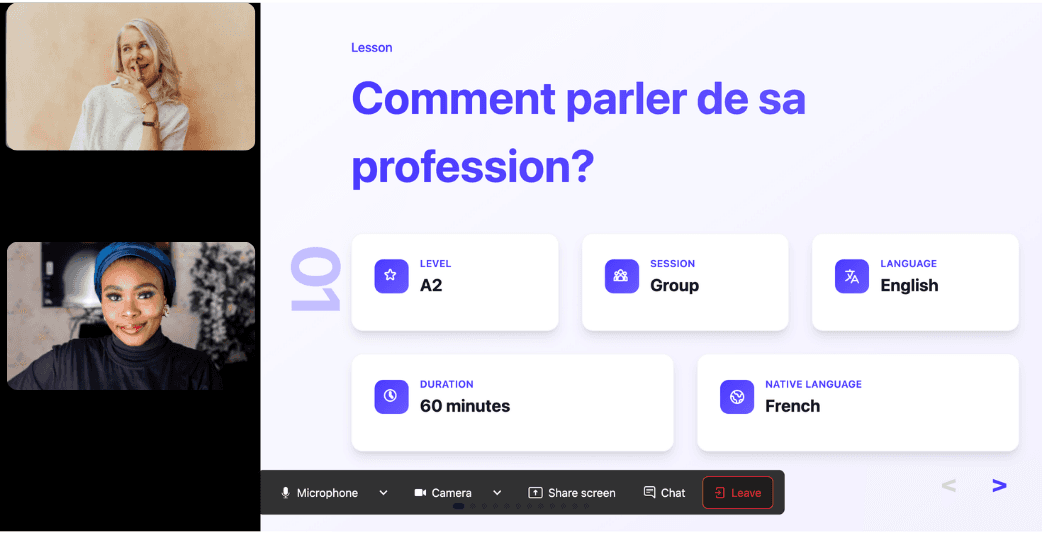
In a 25-minute lesson, Kylian teaches exactly what you need to know about your chosen topic: the nuances that textbooks never explain, key cultural differences between French and your target language, grammar rules, and much more.
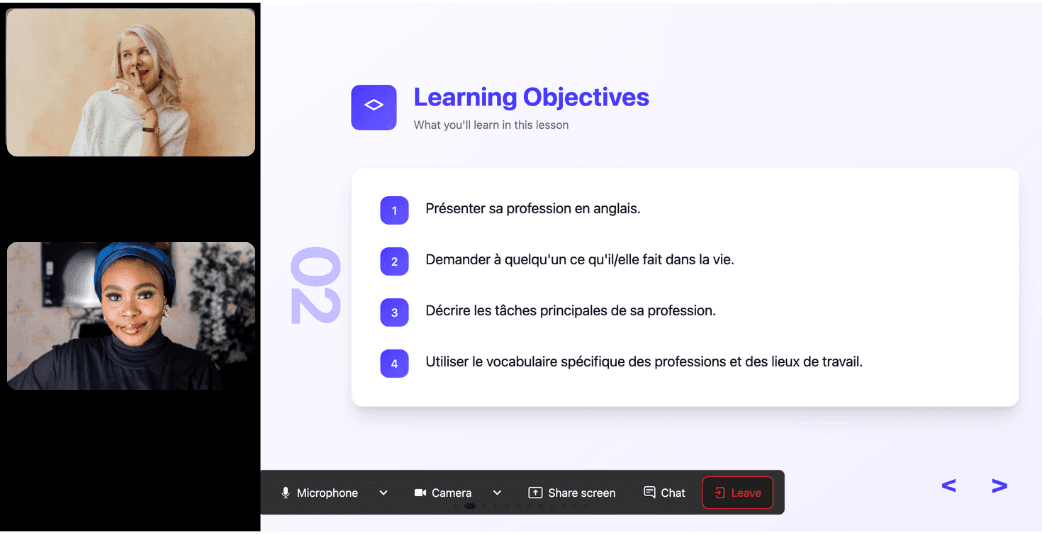
Ever felt frustrated trying to keep up with a native-speaking teacher, or embarrassed to ask for something to be repeated? With Kylian, that problem disappears. It switches intelligently between French and the target language depending on your level, helping you understand every concept at your own pace.
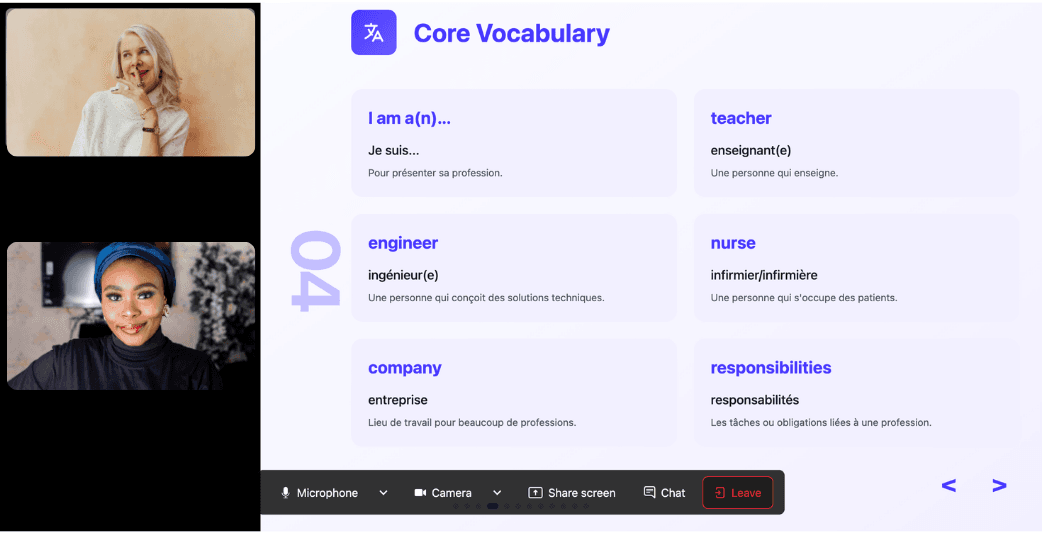
During the lesson, Kylian uses role-plays, real-life examples, and adapts to your learning style. Didn’t understand something? No problem—you can pause Kylian anytime to ask for clarification, without fear of being judged.
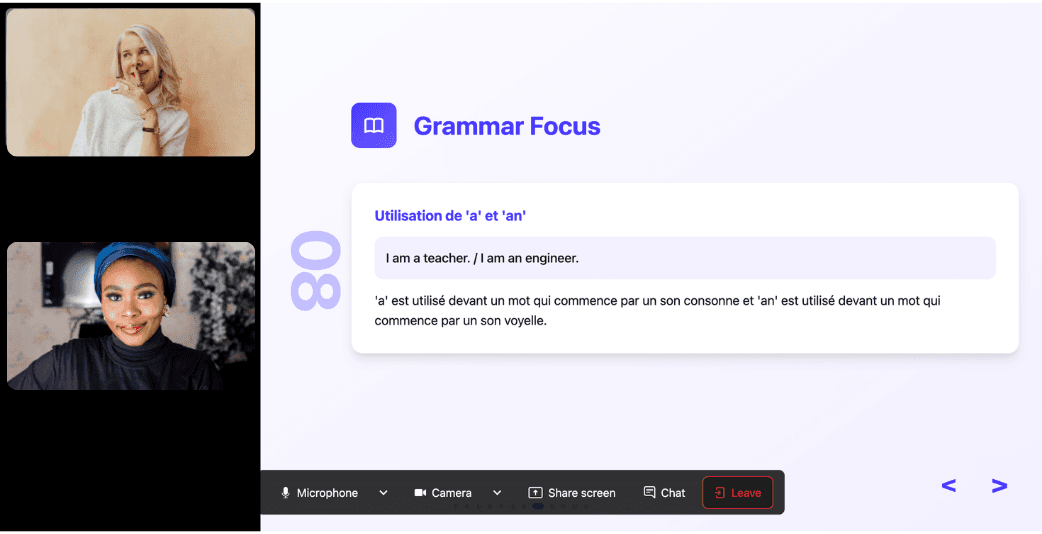
Ask all the questions you want, repeat sections if needed, and customize your learning experience in ways traditional teachers and generic apps simply can’t match.
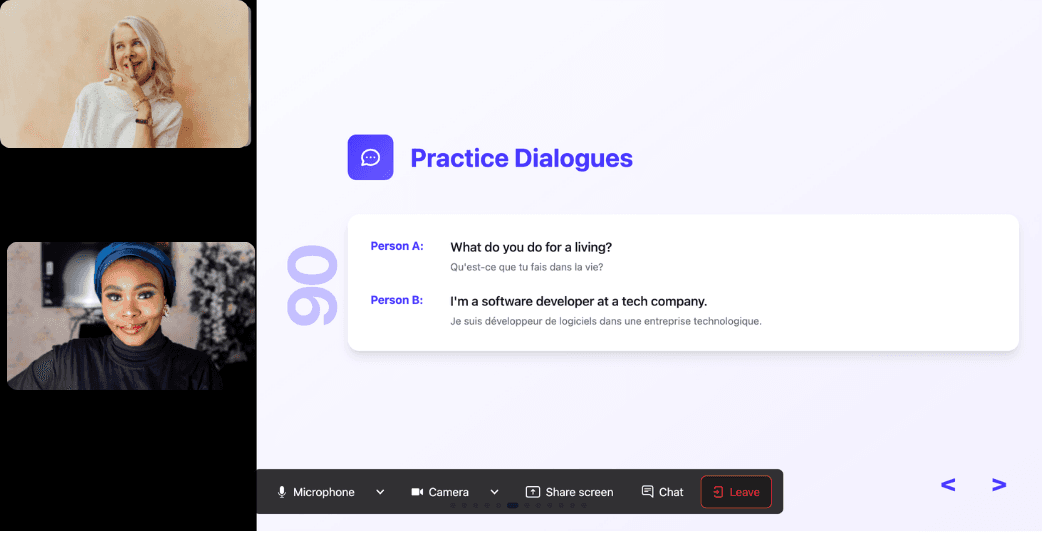
With 24/7 access at a fraction of the cost of private lessons, Kylian removes all the barriers that have kept you from mastering the language you’ve always wanted to learn.
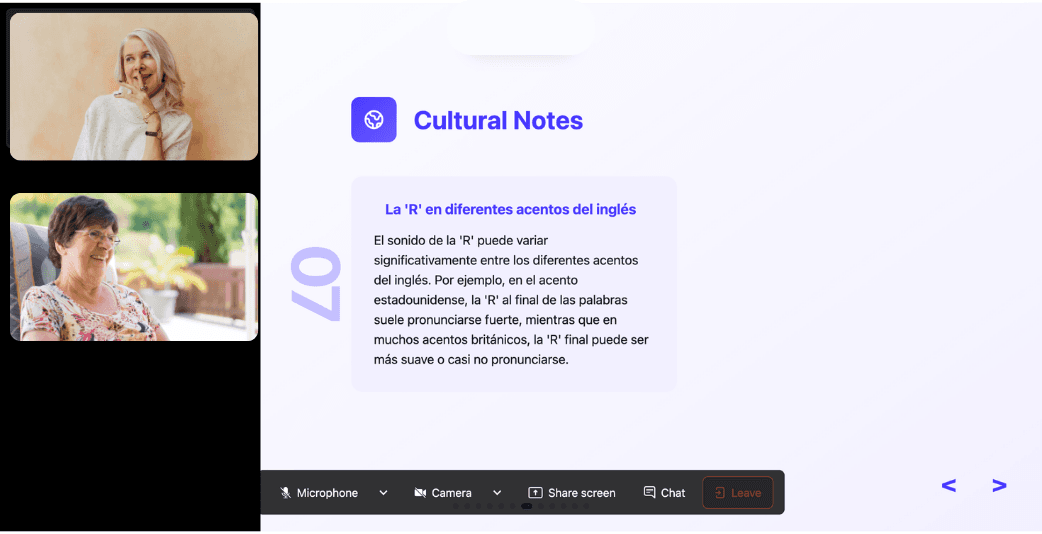
Similar Content You Might Want To Read

April Abbreviations: Essential Ways to Write Apr
Precision in written communication matters more than ever. Whether you're drafting formal documents, filling out forms, or managing digital calendars, knowing the correct abbreviation for April eliminates ambiguity and maintains professional standards. The standard abbreviation for April is "Apr" – three letters, no period required in most contexts. However, different industries, regions, and formatting standards create variations that every professional should understand. From military documentation to international business correspondence, the wrong abbreviation can signal carelessness or cultural unfamiliarity. In this article, we'll examine every accepted method for abbreviating April, explain when each version applies, and provide the cultural context that determines appropriate usage across different professional environments.

How to Write the Date in English: Global Best Practices
In our increasingly interconnected world, mastering the correct way to write dates in English isn't merely a matter of grammatical precision—it's an essential communication skill. The varying conventions across English-speaking countries can create significant confusion in professional correspondence, legal documents, and everyday communication. When does the month come first? When should you use ordinal numbers? How do formal contexts differ from casual settings? These seemingly minor details carry major implications for clarity in cross-cultural exchanges. This comprehensive guide explores the various date formats used throughout English-speaking regions, delves into formal and informal usage contexts, and examines alternative calendar systems. By understanding these conventions, you'll enhance your written communication skills and avoid potential misunderstandings in global interactions.
![How Do You Use "i.e." in a Sentence? [English]](/_next/image?url=https%3A%2F%2Fcdn.sanity.io%2Fimages%2F147z5m2d%2Fproduction%2F3570caec5b072894912ef54ccdc16077261a2a65-2240x1260.png%3Frect%3D175%2C0%2C1890%2C1260%26w%3D600%26h%3D400&w=3840&q=75)
How Do You Use "i.e." in a Sentence? [English]
In English writing, abbreviations serve as crucial tools for efficient communication. Among these, "i.e." stands as one of the most frequently used yet commonly misunderstood Latin abbreviations. The proper application of "i.e." can enhance clarity and precision in your writing, while incorrect usage might confuse your readers or diminish your credibility. "i.e." derives from the Latin phrase "id est," which translates directly to "that is" in English. Its primary function is to introduce a clarification or a more precise explanation of something previously mentioned. Despite its widespread use across academic, professional, and casual writing, many writers struggle with employing it correctly. This comprehensive guide examines the correct usage of "i.e." in sentences, contrasts it with its often-confused counterpart "e.g.," explores punctuation rules, and provides actionable guidance to help you integrate this abbreviation effectively into your writing repertoire.

Months Names in French: A Complete Guide
Learning the names of months in French represents one of the fundamental building blocks of functional language acquisition. Time references permeate daily conversation, from scheduling appointments to discussing historical events or planning future activities. Without these temporal markers, communication remains severely limited.

Months of the Year in Spanish: The Essential Guide
Learning how to say and write dates in Spanish is fundamental for anyone studying the language. This comprehensive guide covers everything from pronunciation to cultural significance of the months in Spanish. We'll explore proper grammar, historical origins, and provide practical tips to help you master this essential vocabulary.

Nosey vs Nosy: Which Spelling Actually Matters?
English spelling variations create unnecessary confusion for learners, and the nosey vs nosy debate exemplifies this perfectly. Both spellings refer to someone who shows excessive curiosity about others' private affairs, yet most dictionaries and style guides demonstrate a clear preference that learners rarely understand. "Nosy" represents the standard American English spelling, while "nosey" appears primarily in British English contexts, though even this distinction lacks the consistency many grammar resources claim. The critical insight here isn't memorizing which region prefers which spelling—it's understanding when precision in spelling choices actually impacts communication effectiveness.